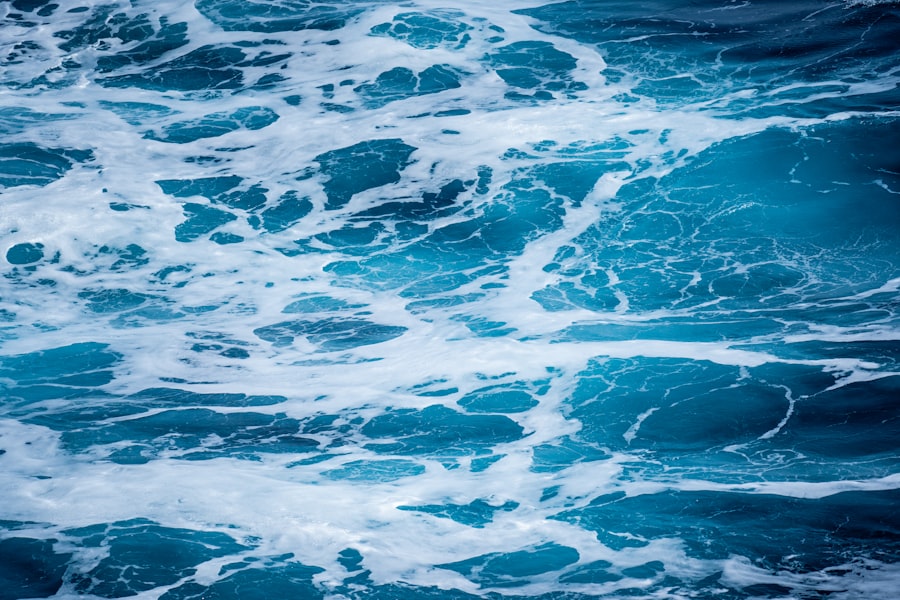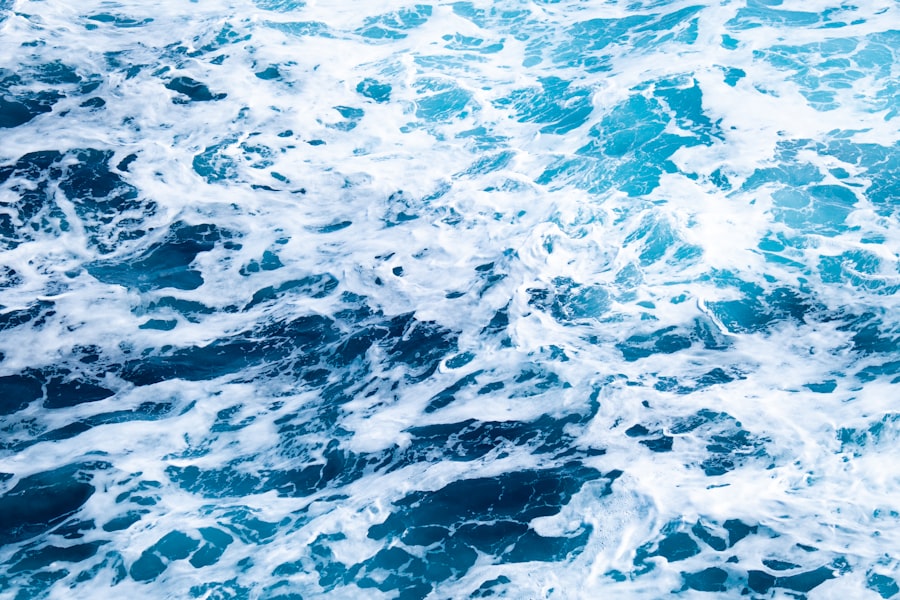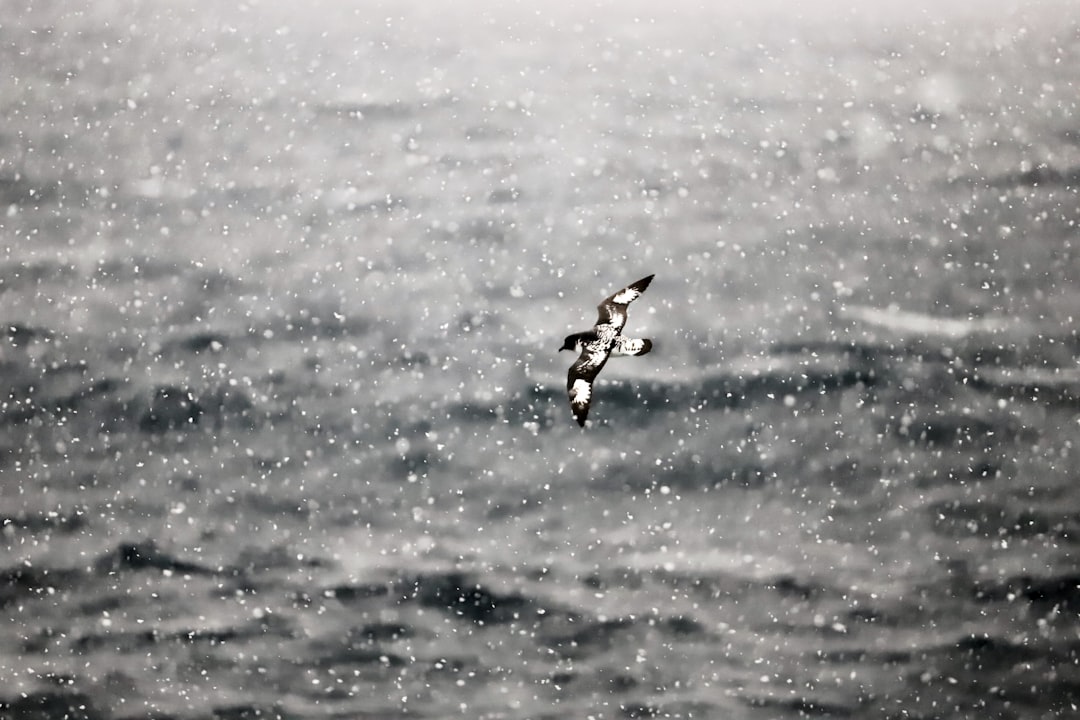The Drake Passage, a body of water that separates South America from Antarctica, is renowned for its tumultuous seas and breathtaking vistas. Named after the English explorer Sir Francis Drake, who navigated these waters in the late 16th century, the passage has become a focal point for adventurers, scientists, and nature enthusiasts alike. Its strategic location serves as a gateway to the Antarctic region, making it a crucial route for maritime travel and research expeditions.
As one of the most notorious maritime routes in the world, the Drake Passage has earned a reputation for its unpredictable weather and challenging conditions. This stretch of ocean is often characterized by high winds and rough seas, which can make crossing it a daunting task.
However, for those who dare to embark on this journey, the rewards are plentiful. The passage offers a unique opportunity to witness some of the planet’s most stunning landscapes and diverse wildlife, making it a coveted destination for many travelers seeking adventure and exploration.
Key Takeaways
- The Drake Passage is a body of water between South America’s Cape Horn and the South Shetland Islands of Antarctica, known for its challenging sailing conditions.
- The geography and climate of the Drake Passage are characterized by strong winds, rough seas, and unpredictable weather, making it one of the most treacherous waterways in the world.
- The historical significance of the Drake Passage is marked by the exploits of early explorers and the discovery of new trade routes, as well as the passage’s role in scientific research and exploration.
- Navigating the Drake Passage presents challenges such as extreme weather, icebergs, and strong currents, requiring skilled seamanship and careful planning.
- Safety measures and precautions for crossing the Drake Passage include securing proper gear, obtaining medical advice, and following guidelines for wildlife encounters to ensure a safe journey.
Understanding the geography and climate of the Drake Passage
Geographically, the Drake Passage spans approximately 800 kilometers (500 miles) between Cape Horn at the southern tip of South America and the Antarctic Peninsula. This narrow stretch of water is not only significant for its location but also for its role in global ocean currents. The confluence of the Atlantic, Pacific, and Southern Oceans creates a dynamic marine environment that influences weather patterns and marine biodiversity.
The passage is often described as a meeting point of two worlds, where the cold waters of Antarctica collide with the warmer currents from the north. The climate of the Drake Passage is notoriously volatile, with conditions that can change rapidly. The region experiences strong winds, particularly during the winter months, which can lead to towering waves and treacherous sailing conditions.
Temperatures can vary significantly, with frigid air masses from Antarctica mixing with milder air from the north. This climatic unpredictability is a defining characteristic of the Drake Passage, contributing to its reputation as one of the most challenging maritime routes in existence. Travelers must be prepared for sudden shifts in weather, as calm seas can quickly transform into turbulent waters.
Historical significance of the Drake Passage

The historical significance of the Drake Passage is deeply intertwined with exploration and maritime history. Sir Francis Drake’s voyage through these waters in 1578 marked one of the first recorded crossings, paving the way for future explorers and navigators. His journey not only demonstrated the potential for maritime trade routes but also highlighted the challenges posed by the passage’s unpredictable conditions.
Over the centuries, numerous explorers have ventured into these waters, each contributing to our understanding of this remote region. In addition to its role in exploration, the Drake Passage has also been pivotal in scientific research. The waters are rich in marine life and serve as an important area for studying oceanography and climate change.
Researchers have utilized this passage to gather data on ocean currents, temperature variations, and biodiversity. The historical context of the Drake Passage extends beyond exploration; it encompasses a legacy of scientific inquiry that continues to this day.
Challenges of navigating the Drake Passage
| Challenges of navigating the Drake Passage |
|---|
| Extreme weather conditions |
| Rough seas and strong winds |
| Potential for icebergs and ice floes |
| Narrow and unpredictable navigational route |
| Isolation and limited access to assistance |
Navigating the Drake Passage presents a myriad of challenges that can test even the most seasoned mariners. The unpredictable weather patterns are perhaps the most daunting aspect, as storms can arise with little warning. High winds and large swells can create hazardous conditions that make sailing treacherous.
Many vessels have encountered difficulties while traversing these waters, leading to a reputation for danger that has persisted throughout history. In addition to weather-related challenges, navigational hazards also pose risks in the Drake Passage. Icebergs and floating debris are common sights in these waters, particularly during certain times of the year when ice melts from Antarctica.
Mariners must remain vigilant and employ advanced navigation techniques to avoid collisions and ensure safe passage. The combination of natural obstacles and unpredictable weather makes crossing the Drake Passage a formidable undertaking that requires skill, experience, and careful planning.
Safety measures and precautions for crossing the Drake Passage
Given the inherent risks associated with crossing the Drake Passage, safety measures are paramount for any expedition or voyage through these waters. Mariners are advised to equip their vessels with state-of-the-art navigation systems and communication devices to ensure they can respond effectively to changing conditions. Additionally, having a well-trained crew familiar with emergency protocols is essential for managing potential crises.
Preparation also involves thorough planning before setting sail. This includes monitoring weather forecasts closely and being ready to adjust routes or delay departures if conditions appear unfavorable. Many experienced sailors recommend undertaking training courses focused on navigating challenging waters to enhance skills and confidence.
By prioritizing safety measures and being proactive in their approach, travelers can mitigate risks and enjoy a more secure journey through the Drake Passage.
Wildlife and natural beauty of the Drake Passage

The Drake Passage is not only known for its challenging conditions but also for its remarkable wildlife and stunning natural beauty. The waters teem with life, providing a habitat for various marine species, including seals, whales, and an array of seabirds. The sight of humpback whales breaching or orcas hunting in these waters is a breathtaking experience that draws many nature enthusiasts to the region.
The surrounding landscapes are equally captivating, with rugged coastlines and dramatic ice formations that create a striking contrast against the deep blue sea. Glaciers calving into the ocean produce spectacular displays of icebergs that float majestically through the passage. For those fortunate enough to witness this natural wonderland, it becomes clear that the Drake Passage is not just a route but a destination filled with awe-inspiring sights and unforgettable encounters with wildlife.
Tips for preparing for a journey through the Drake Passage
Preparing for a journey through the Drake Passage requires careful consideration and planning to ensure a safe and enjoyable experience. First and foremost, travelers should invest in high-quality gear suitable for cold and wet conditions. Layering clothing is essential to adapt to fluctuating temperatures, while waterproof outer layers can provide protection against splashes and rain.
Additionally, travelers should familiarize themselves with their vessel’s safety equipment and emergency procedures before setting sail. Understanding how to use life jackets, flares, and communication devices can be crucial in case of an emergency. It is also advisable to pack seasickness remedies, as many individuals may experience discomfort due to the passage’s notorious swells.
Popular routes and destinations in the Drake Passage
Several popular routes traverse the Drake Passage, each offering unique experiences for travelers seeking adventure in this remote region. One of the most well-known routes is from Ushuaia, Argentina, to various destinations in Antarctica, including Deception Island and Paradise Bay. This journey allows travelers to explore some of Antarctica’s most stunning landscapes while experiencing the thrill of crossing one of the world’s most famous maritime passages.
Another popular option is embarking on an expedition cruise that includes wildlife watching opportunities along with visits to research stations or historic sites on nearby islands. These cruises often provide guided excursions that enhance travelers’ understanding of the region’s ecology and history while allowing them to witness its breathtaking beauty firsthand.
The experience of crossing the Drake Passage
Crossing the Drake Passage is an experience unlike any other, characterized by a mix of anticipation and exhilaration. As travelers set sail from Ushuaia or another port, they often feel a sense of excitement about what lies ahead. The initial days at sea may be marked by calm waters as they leave civilization behind; however, as they approach the passage itself, they may encounter increasingly challenging conditions.
For many travelers, crossing the Drake Passage becomes a rite of passage—a test of endurance that ultimately leads to unforgettable memories. The thrill of witnessing towering waves and navigating through unpredictable weather creates a sense of camaraderie among passengers and crew alike. As they finally reach calmer waters near Antarctica, travelers often reflect on their journey with awe and appreciation for both nature’s power and beauty.
Alternative ways of crossing the Drake Passage
While traditional maritime routes remain popular for crossing the Drake Passage, alternative methods have emerged that cater to different preferences and interests. For those seeking a more adventurous experience, kayaking expeditions offer an intimate way to explore these waters while getting up close to marine life and ice formations. Guided kayaking tours allow participants to navigate smaller areas of the passage while enjoying breathtaking views from sea level.
Additionally, some travelers opt for air travel as an alternative means of crossing this challenging stretch of water. Charter flights from Ushuaia directly to research stations or landing sites in Antarctica provide a quicker option for those who wish to bypass rough seas altogether. This method allows travelers to maximize their time exploring Antarctica while avoiding potential discomfort associated with sea travel.
The allure and adventure of the Drake Passage
The allure of the Drake Passage lies not only in its geographical significance but also in its rich history, diverse wildlife, and breathtaking landscapes. For adventurers seeking an unforgettable experience, crossing this notorious stretch of water offers both challenges and rewards that few other journeys can match. From navigating turbulent seas to witnessing majestic whales breaching against a backdrop of icebergs, every moment spent in this remarkable region becomes etched in memory.
As travelers prepare for their own journeys through the Drake Passage—whether by ship or kayak—they embark on an adventure that transcends mere travel; it becomes an exploration of nature’s raw beauty and power. The passage serves as a reminder of both humanity’s resilience in facing challenges and our deep connection to the natural world around us.
The Drake Passage is often cited as one of the roughest seas in the world, notorious for its unpredictable weather and turbulent waters. For those interested in learning more about this treacherous stretch of ocean, an insightful article can be found on MyGeoQuest. This article delves into the geographical and meteorological factors that contribute to the Drake Passage’s reputation. To explore this topic further, you can read the full article by visiting MyGeoQuest’s detailed exploration of the Drake Passage.
WATCH NOW! Drake Passage: Earth’s Deadliest Waters Revealed
FAQs
What is the Drake Passage?
The Drake Passage is the body of water between the southern tip of South America at Cape Horn and the South Shetland Islands of Antarctica. It connects the southwestern part of the Atlantic Ocean with the southeastern part of the Pacific Ocean.
Is the Drake Passage the roughest sea?
Yes, the Drake Passage is known for its rough and unpredictable seas due to the convergence of the Atlantic, Pacific, and Southern oceans. The strong westerly winds and the lack of any landmass to slow down the waves contribute to its reputation as one of the roughest seas in the world.
What causes the rough seas in the Drake Passage?
The rough seas in the Drake Passage are primarily caused by the strong westerly winds that sweep across the open ocean, creating large waves and swells. The lack of any landmass to break up the waves also contributes to the rough conditions.
Are there any dangers associated with crossing the Drake Passage?
Crossing the Drake Passage can be dangerous due to the rough seas and unpredictable weather conditions. Severe storms and high winds are common in the area, making it challenging for ships to navigate safely.
Are there any benefits to crossing the Drake Passage?
Despite its reputation for rough seas, the Drake Passage is also known for its rich marine life and unique ecosystems. Many travelers and scientists visit the area to observe wildlife such as whales, seals, and seabirds, as well as to study the region’s geology and climate.
